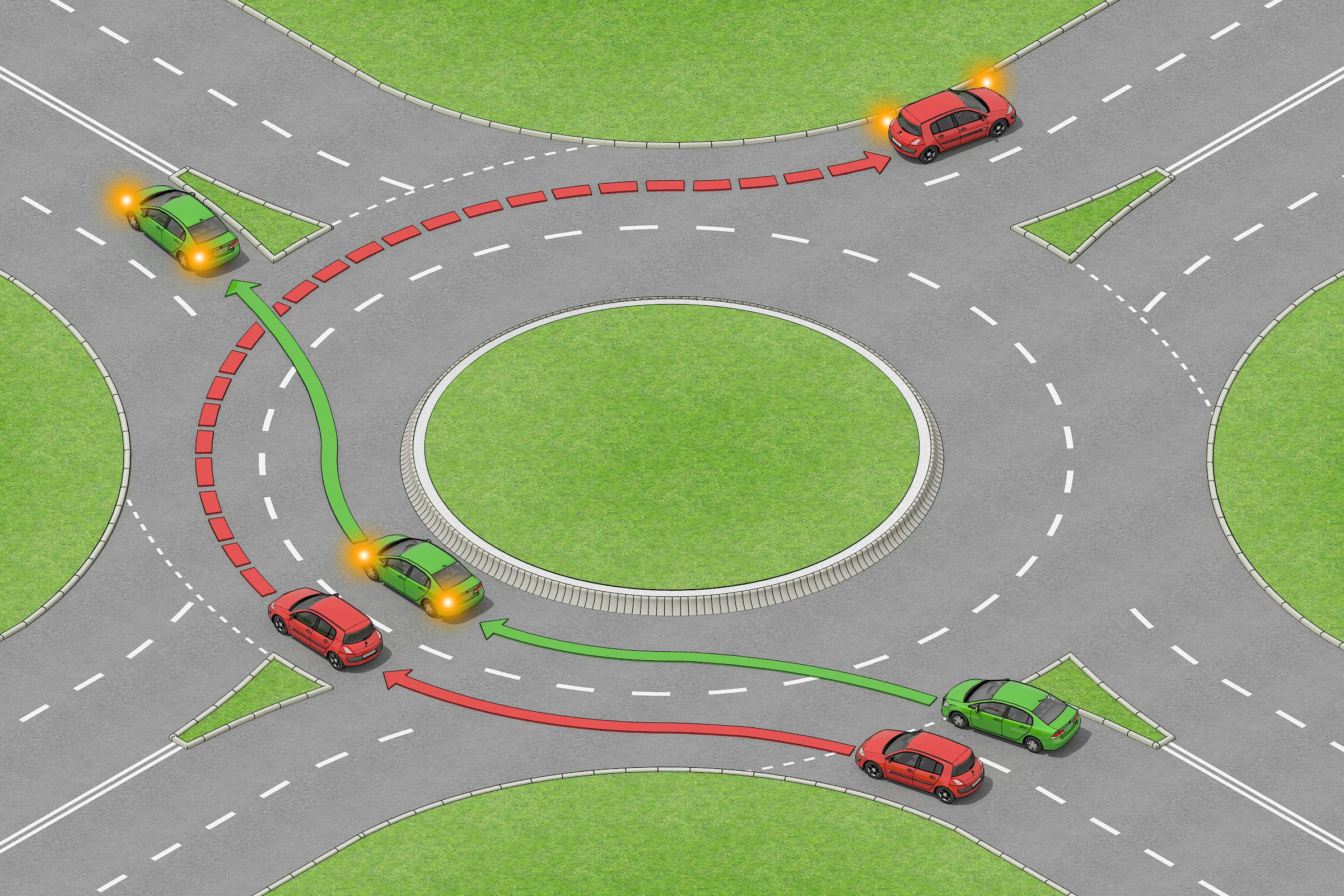
What is a Roundabout?
A roundabout consists of a central island and one or more lines of traffic that travel in the same direction. Always keep left of the central island. If arrows are marked before or in the roundabout, you must follow the direction of the arrows.
There can also be traffic lights to regulate the flow of traffic rounding a roundabout, and other lane markings which will direct you in navigating around roundabouts.
When reaching the roundabout
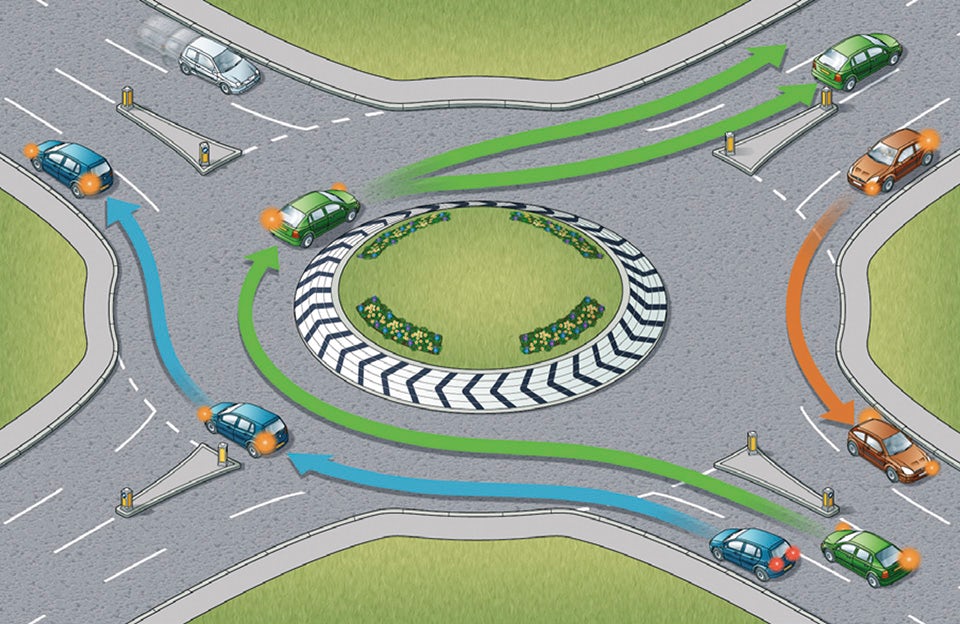
The 4 most important things to remember when reaching a roundabout:
- Give priority to traffic approaching from your right, unless directed otherwise by signs, road markings or traffic lights
- Check whether road markings allow you to enter the roundabout without giving way. If so, proceed, but still look to the right before joining
- Watch out for all other road users already on the roundabout; be aware they may not be signalling correctly or at all
- Look forward before moving off to make sure traffic in front has moved off
How to Use a Roundabout
You will need to drive differently depending on where you want to go while keeping in mind the type of roundabout. Positioning yourself correctly is very important to safely drive around roundabouts.
Now we’ll go through the steps you need to know when:
- Turning left
- Turning right or going full circle
- Taking any intermediate exit
- There are more than three lanes
When turning left
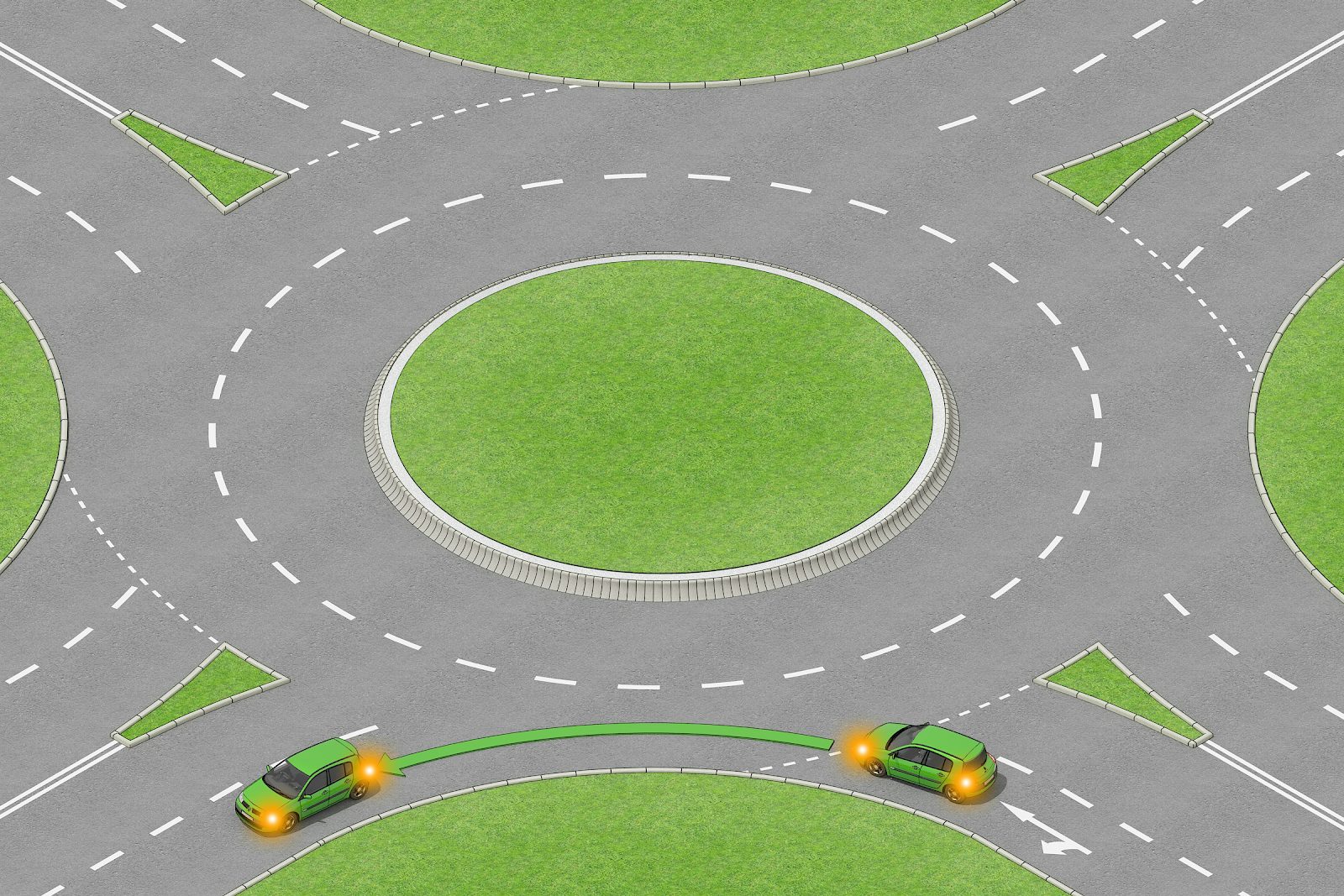
Follow these 2 steps when taking the first exit to the left, unless signs or markings indicate otherwise:
- Signal left and approach in the left-hand lane
- Keep to the left on the roundabout and continue signalling left to leave
When turning right or going full circle

Follow these 3 steps when taking an exit to the right or going full circle, unless signs or markings indicate otherwise:
- Signal right and approach in the right-hand lane
- Keep to the right on the roundabout until you need to change lanes to exit the roundabout
- Signal left after you have passed the exit before the one you want
When taking any intermediate exit
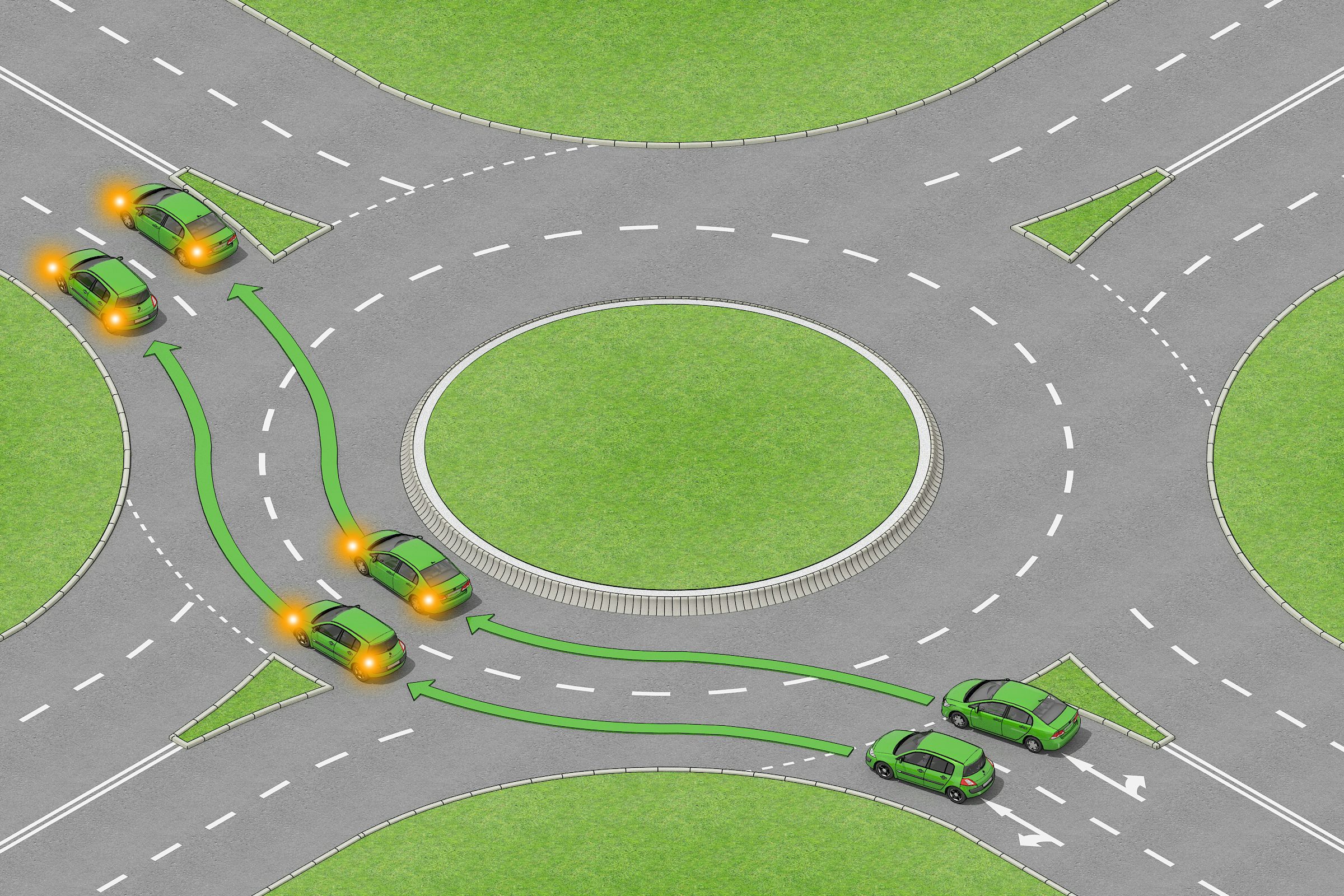
Follow these 4 steps when taking any intermediate exit, unless signs or markings indicate otherwise:
- Select the appropriate lane on approach to the roundabout
- You should not normally need to signal on approach
- Stay in this lane until you need to alter course to exit the roundabout
- Signal left after you have passed the exit before the one you want
Roundabouts With More Than Three Lanes
When there are more than three lanes at the entrance to a roundabout, use the most appropriate lane on approach and through it. The lanes in a three lane roundabout correspond to the exit points, with the first lane leading to the furthest to the left, the second exit corresponding to the middle lane and the third exit being accessible from the lane that is furthest to the right.
Roundabout risks
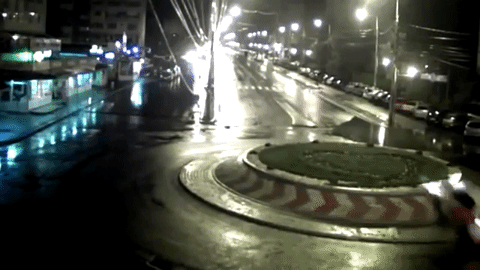
Roundabouts are safer than junctions if you know how to use them and know the risks that are associated with them. These are the 6 dangers you need to watch out for when approaching or using a roundabout:
- Pedestrians who may be crossing the approach and exit roads
- Traffic crossing in front of you on the roundabout, especially vehicles intending to leave by the next exit
- Traffic which may be straddling lanes or positioned incorrectly
- Motorcyclists
- Cyclists and horse riders who may stay in the left-hand lane and signal right if they intend to continue round the roundabout. Allow them to do so
- Long vehicles (including those towing trailers). These might have to take a different course or straddle lanes either approaching or on the roundabout because of their length. Watch out for their signals
Multiple roundabouts
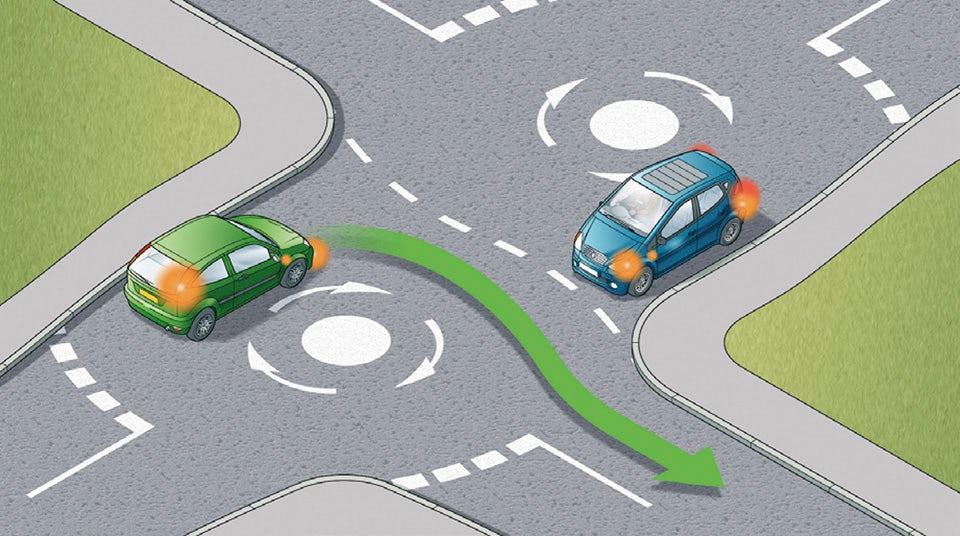
At some complex junctions, there may be a series of mini-roundabouts at each intersection. Treat each mini-roundabout separately and follow the normal rules.
